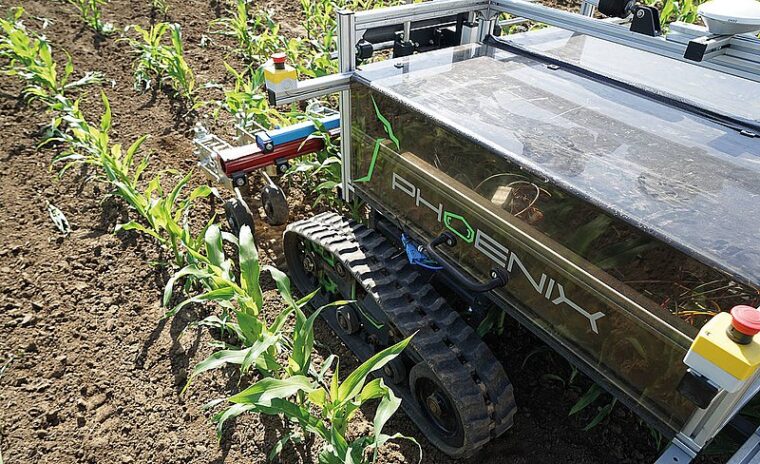
The National Science Foundation (NSF) and the U.S. Department of Agriculture’s National Institute of Food and Agriculture (USDA NIFA) are joining forces to spearhead advancements in agricultural robotics.
While the NSF’s Foundational Research in Robotics (FRR) program has been around since 2020, this is the first time NIFA has been a partner.
In a Dear Colleague Letter published April 18, the agencies are seeking research proposals that “present a compelling vision for pioneering robots with transformative potential in agricultural contexts.”
Within this initiative, FRR doesn’t have inherent goals but is instead exploring what’s possible through proposals.
“Once those come in, a panel of experts from both agencies will sort through those and we’ll see where we go from there and if anything comes from them,” said Michael England, a media officer with the NSF.
The FRR announcement defines robotics as “intelligence embodied in an engineered construct, with the ability to process information, sense, plan, and move within or substantially alter its working environment.”
It specifies intelligence as “a broad class of methods that enable a robot to solve problems or to make contextually appropriate decisions and act upon them.”
While automation has continuously improved farming over the past century, one of the largest remaining obstacles is efficient harvesting.
“This partnership represents a unique opportunity to harness the power of robotics to address pressing challenges in agriculture,” said Michael Littman, director for the NSF Division of Information and Intelligent Systems. “By bringing together researchers from diverse backgrounds, we can unlock new insights and develop cutting-edge solutions that will benefit farmers and consumers alike.”
Using robots to confront agricultural challenges
FRR focuses on the role robotics can play in addressing challenges faced by agriculture and downstream food production. As global demand for food rises, along with the need for precise agriculture techniques, robotics present a new way to enhance productivity and sustainability in the agricultural sector.
By pooling resources and expertise, NSF and USDA are looking for interdisciplinary research that confronts agricultural challenges head-on.
Researchers will be invited to submit proposals for projects that demonstrate new solutions, which will be reviewed by both agencies for their ability to drive advancements in agriculture and robotics.
“Agricultural robotics holds tremendous promise for enhancing productivity, reducing environmental impact and improving the overall resilience of our food systems,” said Steven Thomson, national program leader with NIFA. “Through this collaboration, we aim to catalyze breakthroughs that will benefit farmers, consumers and the environment.”
The program seeks research that considers questions of intelligence, computation and embodiment.
Proposals should clearly articulate the following three points, specified by FRR:
Is there a robot?: The focus of the research project should be a robot or a class of robots.
Will a robot gain a new or significantly improved capability?: The goal of the project should be to endow a robot or a class of robots with new and useful capabilities or to significantly enhance existing capabilities.
Is robotics essential to the intellectual merit of the proposal?: The intellectual contribution of the proposed work should address fundamental gaps in robotics.
Photo by DLG e.V.
The post Federal initiative seeks research into agricultural robots appeared first on Government Market News.
